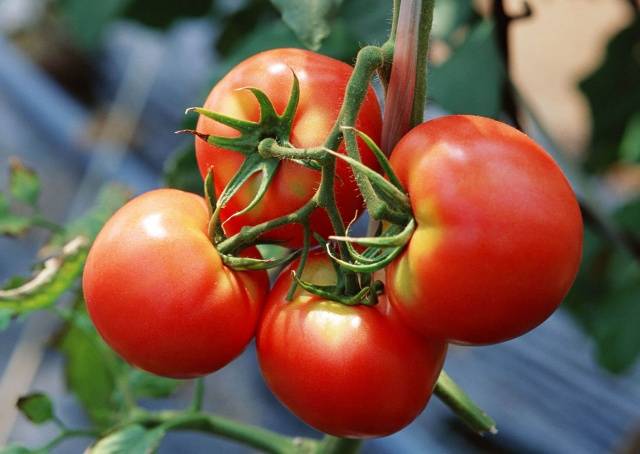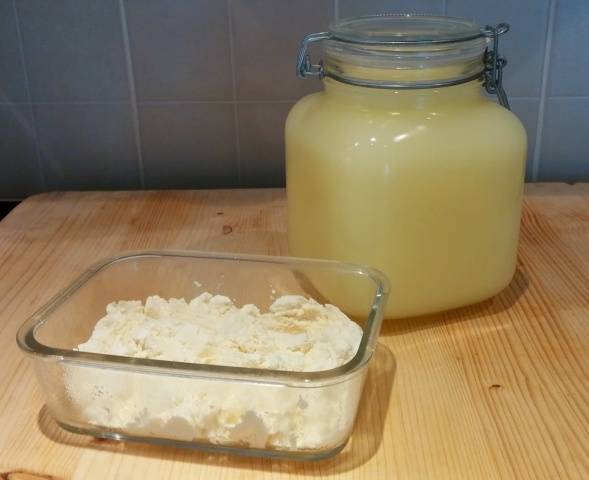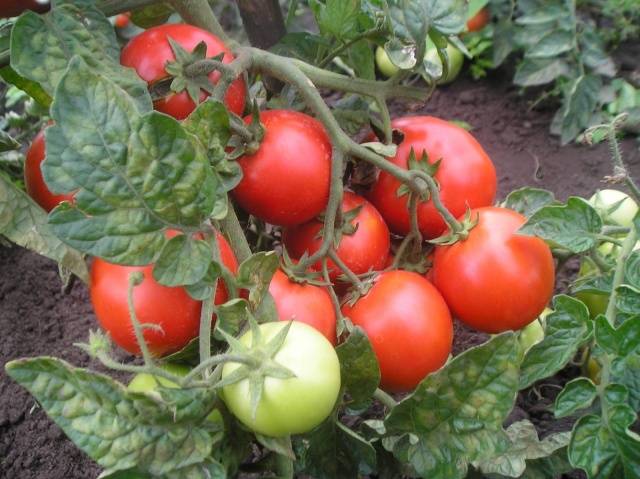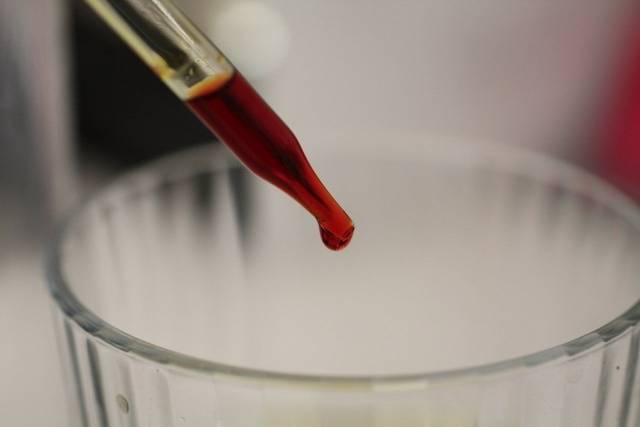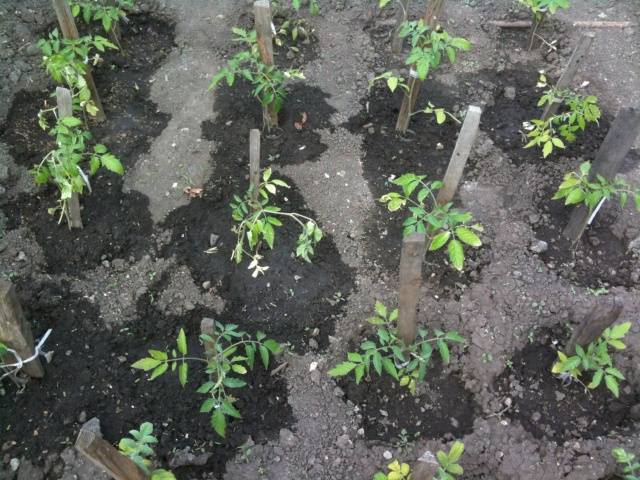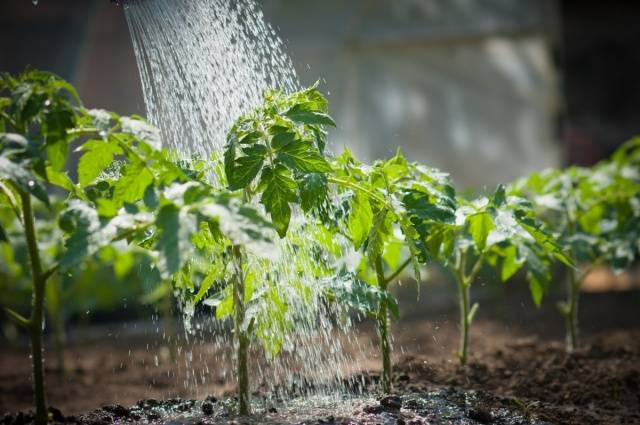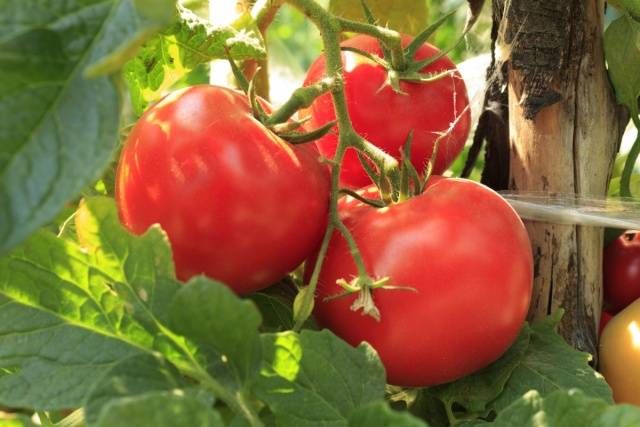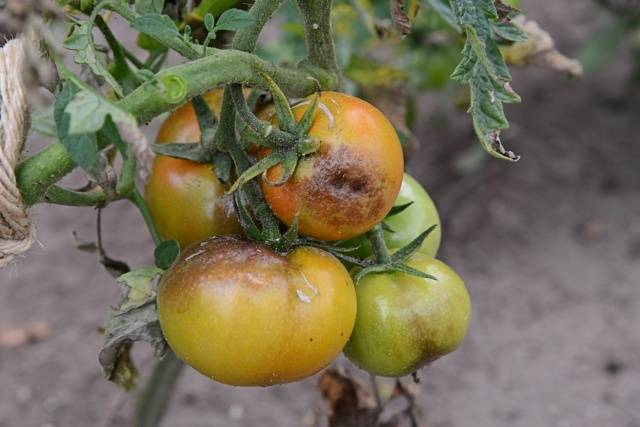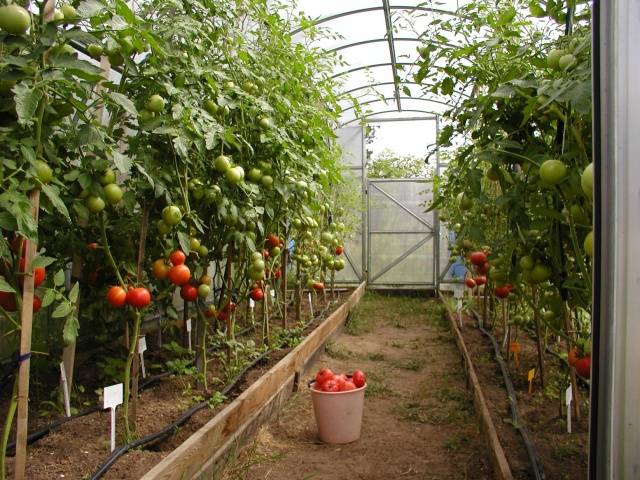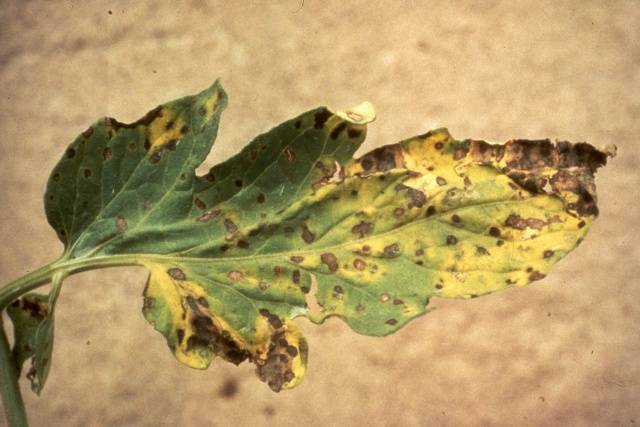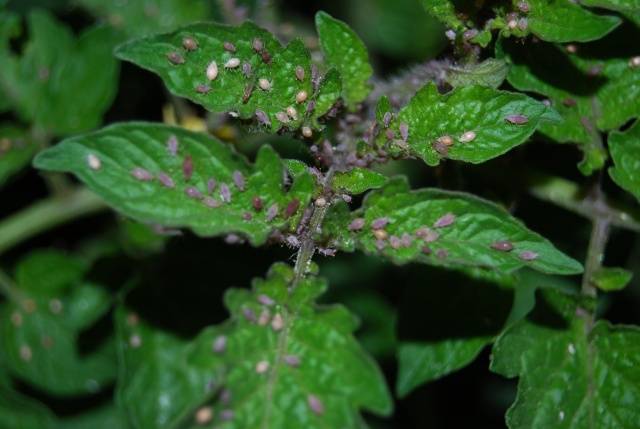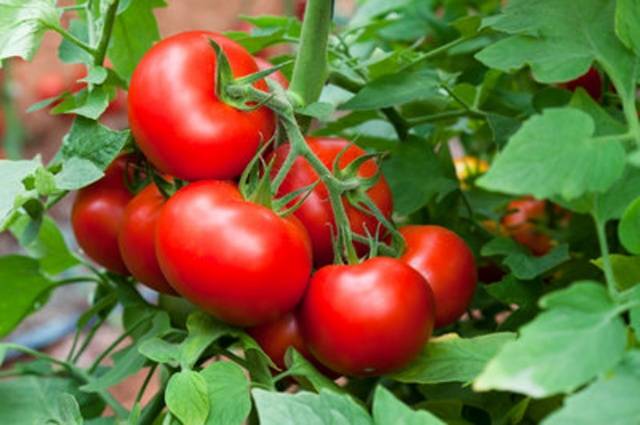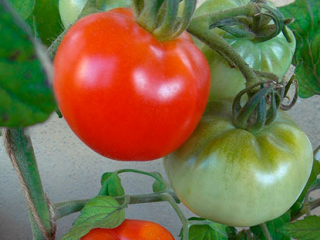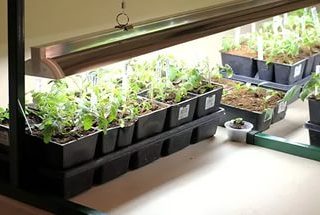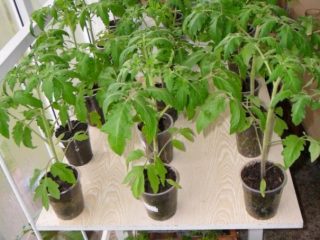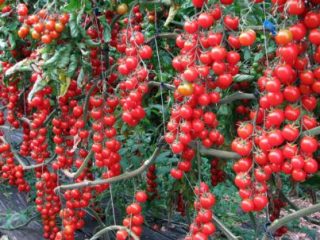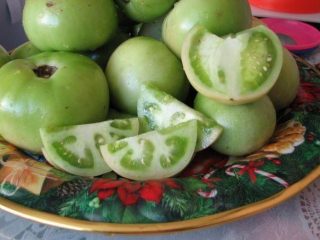Content
For active development, tomatoes require comprehensive care. This includes watering the plants and foliar treatments. A universal means for feeding tomatoes is milk. Based on it, solutions are prepared that saturate plants with nutrients. An additional effect of using milk is repelling pests, protecting against late blight and other fungal diseases.
Benefits of milk for plants
Milk contains a number of useful substances that have a positive effect on the development of tomatoes:
- potassium, phosphorus, copper, calcium, iron and other trace elements;
- lactose;
- amino acids.
Potassium is required by plants for photosynthesis. When it is deficient, tomato leaves droop, darken and acquire a bluish tint. In the future, this leads to the foliage drying out at the edges, while the stems become thinner.
Phosphorus controls the metabolic processes of plants and serves as their main source of energy. The lack of this element leads to slow development, changes in the shape and color of foliage. Phosphorus is especially important during the flowering and formation of tomato ovaries.
Due to calcium ensures the structure of plants, as well as the passage of nitrogen and carbohydrate metabolism.With a lack of calcium, the top shoots of tomatoes die, the leaves curl and turn pale.
Feeding tomatoes milk can provide a comprehensive supply of elements vital for plants. All components of milk have a natural form, so they are easily absorbed by tomatoes.
Another component of milk is amino acids. Their task is to activate the growth process of tomatoes.
As a result, dairy fertilizing brings the following benefits to plants:
- metabolism improves;
- beneficial components from the soil are well absorbed;
- plants receive complex nutrition;
- the efficiency of organic fertilizers increases;
- milk-based preparations are environmentally friendly and safe;
- After fertilizing, the content of nutrients in the fruit increases.
Choosing milk for feeding
Tomatoes should be treated with solutions based on raw milk. It contains a maximum of useful components that are not preserved after boiling or other processing. It is possible to use pasteurized milk, however, its effectiveness will not be as high.
Whey is a derivative product of milk. It is obtained during the process of making cottage cheese, when liquid is separated from the final product.
You can prepare serum for feeding tomatoes at home. This requires 1 liter of milk, which is placed in a warm place overnight. The resulting curdled milk is poured into a saucepan and heated until the required substance is separated. The product is filtered through cheesecloth to obtain a liquid without unnecessary impurities.
The serum is especially effective in combating fungal diseases. The beneficial microorganisms contained in it are capable of resisting pathogenic microbes.
The serum can be used as an insect trap. To do this, the container with this liquid is suspended in the greenhouse for the night. The serum attracts caterpillars, butterflies and other pests.
Other components
Milk is a natural product that combines well with other substances. Using various components for the solution allows you to obtain a balanced composition for feeding tomatoes.
Adding Ash
Ash is a product of combustion of wood and plants. It is not allowed to use ash for fertilizer after burning garbage, building materials, plastic or magazines.
Part ash includes many compounds based on calcium, potassium and magnesium. Solutions based on this substance help saturate tomatoes with the missing elements and also protect them from pathogenic bacteria.
Feeding with ash can be carried out throughout the entire life cycle of plants. Additionally, it is added to the soil before watering. The use of ash improves the taste of tomatoes, as the fruits become sweeter and juicier.
Compositions with iodine
iodine is a universal means for disinfecting soil and plants themselves. In case of shortage iodine tomatoes grow slowly, which negatively affects fruiting.
To prevent fungal diseases, tomatoes are sprayed with a solution containing milk and iodine.
Iodine is used only in combination with low-fat milk. It is not recommended to add it to serum. Otherwise, the beneficial bacteria that the whey contains will die.
If there is an excess of iodine, tomatoes will receive burn root system or foliage, depending on the method of processing. Therefore, you must strictly adhere to the specified concentrations for watering and spraying plants.
Irrigation compositions
Tomatoes are demanding when it comes to watering, which should be done rarely but abundantly. This scheme allows you to strengthen the root system. If there is a lack of moisture, the roots do not develop, but receive the necessary substances from the surface of the soil.
Excessive watering leads to cracking of the fruit and loss of taste. High humidity creates a favorable environment for the development of diseases.
In cloudy weather, it is better to replace watering with loosening the soil. The plant should be watered once every week.
You need to fertilize tomatoes with milk in several stages:
- The first feeding is done at the seedling stage. This requires 1 liter of low-fat milk and a bucket of water. You can add 15 drops of iodine to the solution. This composition strengthens tomatoes and prevents the development of fungal infections.
- After planting tomatoes in a greenhouse or soil, the concentration of the solution increases. For 4 liters of water, 1 liter of milk is required. Each well requires up to 500 ml of mixture. Feeding is done every three days. It is allowed to add up to 10 drops of iodine solution.
- During the fruiting period of tomatoes, fertilizing is done twice every week. It is recommended to alternate several types of fertilizers based on ash or iodine.
Fertilizing should be done after watering the tomatoes. This way, nutrients are absorbed faster. The procedure is performed in the morning so that the liquid is absorbed throughout the day without the formation of increased humidity.
Spray compositions
Foliar treatment is a more effective method of feeding tomatoes. Spraying is carried out using special sprayers. To process tomatoes, select a device with a fine nozzle.
When sprayed, the beneficial solution falls directly on the leaves and stems of plants. The results of the procedure can be seen just a few hours after it is performed.
When milk is added to the solution, a protective film is formed on the surface of the leaves. This creates an obstacle to the penetration of pathogenic bacteria.
If tomatoes grow in open ground, then before processing you need to make sure that there is no rain or wind.
For spraying, prepare a solution based on water and milk (whey) in a ratio of 4:1. Additionally, you can add 15 drops of iodine and a glass of ash to the milk.
With normal plant development, it is enough to spray them every week. To make the solution stick better to the foliage, you can add 30 g of soap shavings.
Remedies for diseases
Milk-based compositions help fight fungal infections of tomatoes. When the first signs of disease appear, measures must be taken immediately. This is the only way to preserve the plants themselves and the harvest.Fungal spores spread very quickly and can be found in the greenhouse, seeds, or on garden tools.
Fight against late blight
Late blight is one of the most dangerous diseases of tomatoes. Its first symptoms appear in the form of small spots on the lower leaves of tomatoes, which cannot always be determined by external examination.
Three days later, late blight affects the leaves, stems and fruits of tomatoes. Then dark spots appear on them, which disrupts the life processes of the plant and makes the fruit unsuitable for consumption.
To get rid of late blight, tomatoes are sprayed with complex compounds:
- milk – 1 l;
- wood ash - 2 tbsp. l.;
- iodine solution – 20 drops;
- water – 10 l.
First you need to remove the affected leaves and fruits. It is best to burn them to avoid further spread of harmful spores.
Preparatory measures will help to avoid the disease: adherence to the planting scheme, disinfection of seeds, soil, and garden tools.
Preventive spraying of tomatoes against late blight is carried out every week. Additionally, you need to monitor the humidity level in the greenhouse and provide access to air and sunlight.
If there are signs of late blight, treatment is performed every 3 days. Spraying should be alternated with other methods of combating the disease. You can use Bordeaux mixture, copper sulfate, special preparations, infusions of garlic and yeast.
Brown spot
Brown spotting appears when the humidity in the greenhouse increases to 90%. Tomatoes are especially susceptible to the disease in the middle of the growing season, when the ovary is formed.
Brown spot looks like yellowish spots that form on tomato leaves. A light coating grows on the back of the foliage, which over time acquires a brown tint.
To combat brown spot, use a solution based on milk (1 l), water (10 l) and iodine (10 drops). The product is applied by spraying to the leaves and stems of tomatoes. The procedure is repeated every three days.
The frequency of watering and humidity in the greenhouse are necessarily reduced. Therefore, spraying with milk is done at the beginning of the day.
Pest control compounds
Garden pests cause no less damage to tomatoes than diseases. To protect plants, you need to periodically spray them with a solution based on milk or whey. Lactobacilli repel aphids, cutworms, spider mites and other insects.
Juicy leaves and shoots of tomatoes attract aphids, which can parasitize them for a long time. This insect appears in greenhouses, greenhouses and plantings growing in open ground.
The presence of aphids can be determined by deformed leaves and shoots, as well as by sticky dew on plants.
In such cases, you can not dilute it with water, but immediately use it for spraying. For watering tomatoes, the concentration of whey and water is taken in a 1:1 ratio.
Another control method is a solution of 1 liter of milk, 10 liters of water and 20 drops of iodine. Treatment is carried out by spraying tomatoes.
Conclusion
Milk serves as a source of useful elements for tomatoes. Plants are treated at every stage of their development, starting from the seedling stage.Fertilizers can be applied by watering or spraying. The work is carried out at cool times of the day. Milk or whey is diluted with water in the required proportion. It is allowed to add iodine or ash to the solution.
An additional benefit of milk is its ability to repel insects. Tomatoes should be regularly treated for diseases and pests. Fungal diseases are especially dangerous for plants.

